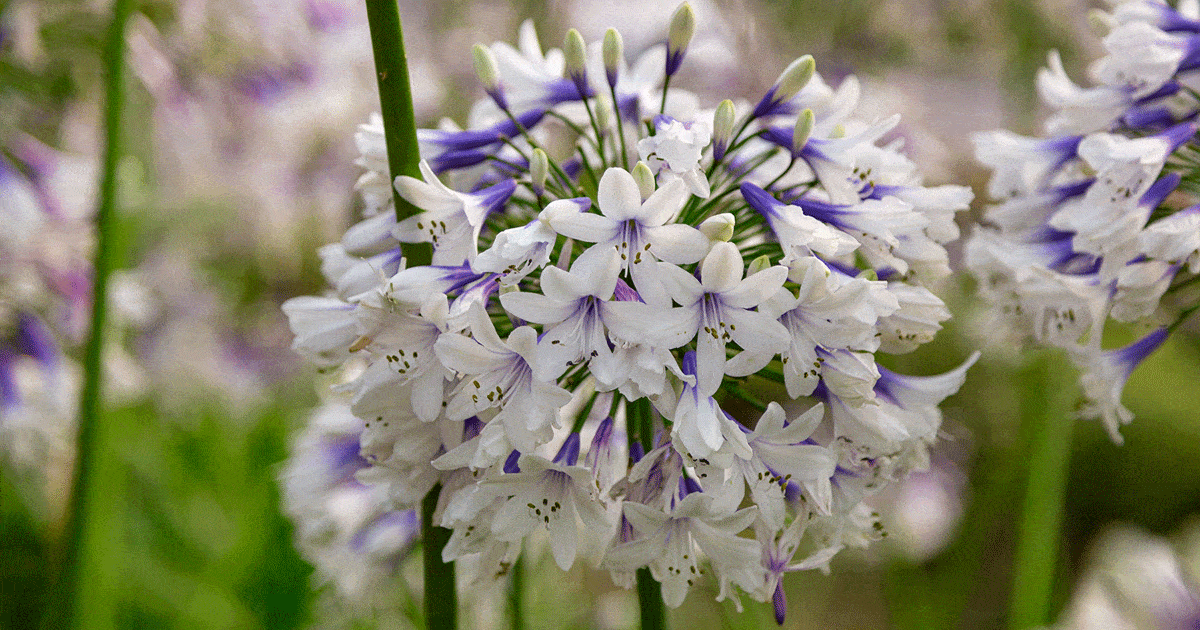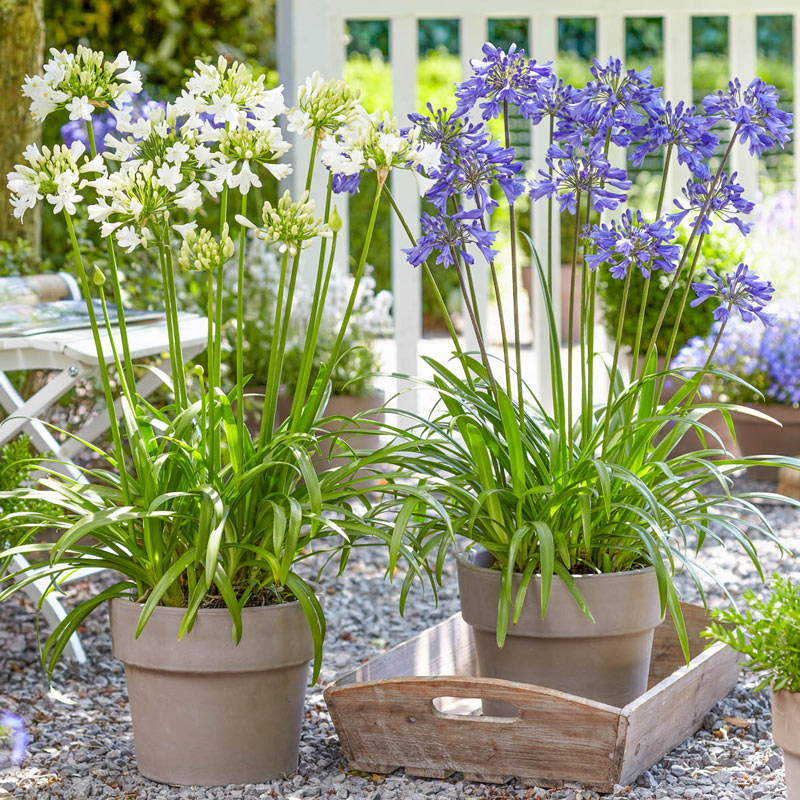Agapanthus Varieties: Selecting the very best for Your Landscape
Agapanthus Varieties: Selecting the very best for Your Landscape
Blog Article
Understanding the Art of Agapanthus Care: Essential Actions for Healthy Development and Vibrant Blooms
In the realm of cultivation, the cultivation of agapanthus stands as a fulfilling endeavor for those that seek to support these sophisticated flowering plants. With their striking flowers and stylish vegetation, agapanthus has actually captured the attention of garden enthusiasts worldwide. Nevertheless, achieving optimum development and vibrant blossoms needs a nuanced technique that encompasses numerous crucial actions. From choosing the best variety to grasping pruning strategies, the trip towards growing growing agapanthus plants is multifaceted and holds the essential to unlocking the complete possibility of these organic treasures.

Picking the Right Agapanthus Variety

When choosing the right Agapanthus selection for your yard, think about aspects such as climate suitability, blossom color, and growth habit. In addition, take into consideration the environment in your area to ensure the Agapanthus selection you pick can grow in your certain conditions. Recognizing the growth practice of various Agapanthus ranges is critical for appropriate positioning within your garden.
Perfect Planting Conditions
Taking into consideration the optimal environmental demands is vital for effective Agapanthus farming. Agapanthus thrives in well-draining soil with a slightly acidic to neutral pH degree. When planting, pick a location that obtains full sunshine to partial color. In hotter climates, providing some afternoon color can stop scorching of the fallen leaves. Agapanthus plants are sensitive to chilly temperature levels and must be safeguarded from frost throughout winter season.
To make certain healthy and balanced growth and lively blossoms, plant Agapanthus bulbs at a deepness of about 2-4 inches and space them 8-12 inches apart. Including raw material, such as garden compost, to the dirt can enhance drain and fertility, advertising robust origin growth. Mulching around the base of the plants assists keep moisture and reduces weed growth. Regular watering is critical, specifically during the growing period, to maintain the dirt consistently moist but not saturated.
Watering and Fertilizing Tips
Preserving appropriate wetness degrees and offering crucial nutrients are crucial elements in the care program for Agapanthus plants. When it comes to watering Agapanthus, it is essential to strike an equilibrium. These plants choose constantly damp soil yet are vulnerable to root rot if overwatered.
Feeding Agapanthus is essential for advertising healthy and balanced growth and prolific flowers. Apply a well balanced plant food, such as a 10-10-10 formula, in the early springtime as brand-new development emerges. Repeat this application every 6-8 weeks throughout the expanding season. Stay clear of excessive fertilizing, as it can bring about lush foliage at the expenditure of blossoms. Always comply with the producer's directions for correct dilution and application approaches. By following these watering and feeding pointers, you can guarantee your Agapanthus plants Recommended Site prosper and generate vivid, lasting flowers.
Trimming Techniques for Agapanthus
Trimming Agapanthus plants at the suitable times and with proper methods is essential for keeping their health and wellness and advertising ideal development and flowering. The optimal time to trim Agapanthus remains in late wintertime or very early springtime before new growth emerges. Start by removing any type of dead or yellowing fallen leaves near the base of the plant. Cut them as close to the ground as feasible without harming the arising shoots.
For flowered stems, wait until the blossoms have actually perished and then cut them back to the base. This not only tidies up the plant's appearance however also motivates the development of brand-new flower buds. Deadheading invested flowers can additionally reroute the plant's energy into generating even more blossoms as opposed to establishing seeds. Nevertheless, if you desire to gather seeds for proliferation, leave some blossoms to dry and fully grown on the plant.
Remember to utilize clean, sharp tools to make exact cuts and lower the danger of introducing diseases. Agapanthus. Regular pruning will assist maintain your Agapanthus looking healthy and balanced and neat while ensuring a bountiful display screen of stunning blossoms
Taking Care Of Common Insects and Conditions
After guaranteeing proper pruning strategies for Agapanthus, it is vital to deal with typical parasites and conditions that can affect the health and wellness and vigor of these plants. One usual insect that impacts Agapanthus is the Agapanthus gall midget.
Another typical issue is fungal leaf area, which offers as dark lesions on the leaves. To stop fungal diseases, make certain excellent air blood circulation around the plants, stay clear of overhead watering, and remove any kind of contaminated you could check here fallen leaves without delay. Furthermore, Agapanthus plants can experience origin rot if they are grown in improperly draining soil. To avoid this, plant Agapanthus in well-draining dirt and prevent overwatering. By being vigilant and taking timely activity against conditions and insects, you can assist your Agapanthus plants flourish and create dynamic blooms.

Final Thought
In verdict, mastering the art of agapanthus care entails selecting the ideal selection, providing perfect planting conditions, appropriate watering and feeding, suitable trimming strategies, and attending to typical insects and illness. By following these necessary actions, you can guarantee healthy development and lively blossoms for your agapanthus plants. Remember to frequently keep an eye on and preserve your plants to advertise their total wellness and durability.
To guarantee healthy development and vivid blossoms, plant Agapanthus bulbs at a depth of regarding 2-4 inches and area them 8-12 inches apart. By complying with these watering and feeding suggestions, you can ensure your Agapanthus plants flourish and generate dynamic, lasting blooms.
One usual bug that impacts Agapanthus is the Agapanthus gall midge. Additionally, Agapanthus plants can endure from origin rot if they are planted in poorly draining pipes soil. By complying with these crucial actions, you can make certain healthy and balanced web development and dynamic blossoms for your agapanthus plants.
Report this page